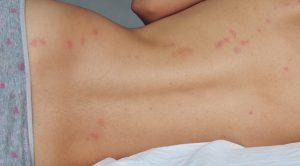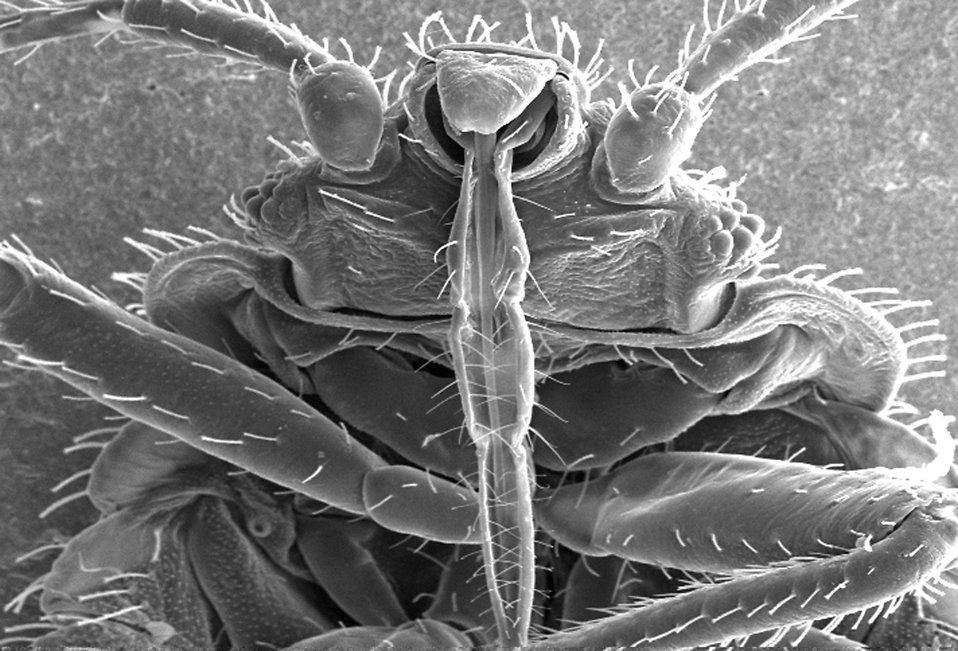 What is there to know about bed bug bites? First let’s talk about Bed bugs. Bed bugs are small, apple seed-sized insects that feed on blood and leave bed bug bites, and they’re normally found near areas where humans spend much of their time.
What is there to know about bed bug bites? First let’s talk about Bed bugs. Bed bugs are small, apple seed-sized insects that feed on blood and leave bed bug bites, and they’re normally found near areas where humans spend much of their time.
They do not fly, but bed bugs are quick-movers that can crawl over floors, walls, and ceilings with ease. Bed bugs typically hide in small, dark spaces and feed when nearby humans are asleep. The most common infestation areas are mattress, box springs, and bed frames.
A single bug usually bites a few times per feeding to find the right blood vessel. It may take several tries. One bug can feed several times a week, and an entire colony means even more trouble.
Most of their activity takes place at night, and they are drawn to any exposed skin they can find. The most likely places for bed bug bites on humans are the face, neck, hands, shoulders, and arms.
About Bed Bug Bites
Since they are painless, bed bug bites are sometimes difficult to detect. The physical symptoms of a bite can range from unseen to red welts or prominent blisters, and it may take a day or up to a week to manifest. Some people no show signs at all.
Bitten individuals may experience itching and welting in spots. The early signs may include a slight burning sensation, which then develops into a rash. Severe cases may result in dramatic swelling or skin inflammations.
Bed bug bites are often misdiagnosed as coming from other insects, such as mosquitoes. Though not always the case, bites are most often grouped together in a small area or patterned in a line or zigzag. There’s also no red spot in the middle like flea bites, which makes them harder to distinguish. Bed bugs also rarely feed in the areas behind the knee or in the armpit, which may help tell them apart from other biting insects.
The sizes of the bites aren’t always the same, either. When bed bugs pierce the skin to feed, they inject a mixture of their saliva and an anti-coagulant into the human. The anti-coagulant determines how the person responds to the bite. Repeated bites may also play a factor, because individuals might respond with varying results. It just depends on how their body reacts to the increased exposure.
Brown or rust-colored spots on sheets or mattresses are a sign of a bed bug infestation, but the only way to really diagnose the problem is to find one of the actual insects.
Treating Bug Bites And Their Symptoms
Most symptoms can be managed at home. Typically, there’s no treatment needed for bites unless the itching becomes too severe. In that case, creams or antihistamines may be prescribed by a dermatologist.
In some cases, individuals may show allergic reactions, especially with numerous bites.
Some warning signs about bed bug bites and when to seek professional medical attention are:
- Chest pain
- Wheezing
- Shortness of breath
- Dizziness
- Fainting
- Swelling
- Fever
- Itchy rash all over body
Bed bugs carry disease organisms, but they don’t actually transmit the diseases or pass them on to humans. The most harmful result of bites come from the secondary infections when someone doesn’t treat the bites or keep them disinfected.
Other Bed Bug Concerns – About bed bug bites
Aside from the physical irritation of bites, the most cause for concern is the psychological effect that repeated bed bug bites can have on a person. Multiple infestations can cause stress and anxiety that result in severe insomnia.
Bed bugs most often prefer human blood, but any warm-blooded animals – especially household pets like cats, dogs, or even birds – are at risk. The bites of animals will appear similar to the bites on humans, and pet owners may just assume fleas or ticks are the result. Instead, it’s important to keep an eye on the pet’s bedding for any indication of bed bugs. Also, keep in mind the bed bug warning signs when you’re grooming your pets.
Bed bug infestations don’t mean you need to get rid of all your things, but there are ways to eliminate bugs and limit how they spread. Once you’ve effectively cleaned up the area, you may want to invest in traps to place around bed posts and other sleeping areas to help kill the problem.
If you really want to get rid of bed bugs today try SayByeBugs! It was developed as a safe and highly effective alternative among a sea of products that rarely deliver on their promises.








